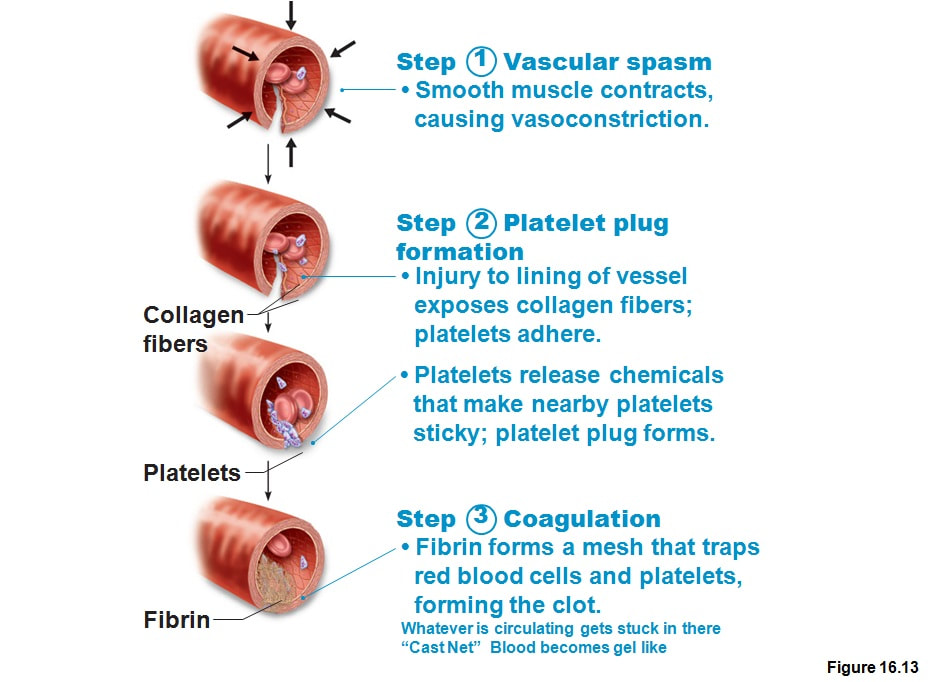Powerpoint
https://docs.google.com/presentation/d/1goU6tl9cDyi9x1MzoiRHmJ-UfH4y4rNLNAB-d9AnGTM/edit?usp=sharing
Notebook Check
- Prime Time- 3
- Vocab- 1
- Components of blood grid + questions & summary- 3
- General blood notes- summary & questions- 2
- Blood typing lab pre lab- 1
- Homeostatic imbalance notes summary & questions- 2
- Organs of lymph notes- 2
- Guided immune notes- 2
- Case Study- 1
- Processing assignment flashcards- 2
Total: 19 stamps
Processing Assignment Flashcards
- Fold a paper into 9 rectangles and cut out
- Include the following: B Cell, B/ T memory cell, Helper T Cell (CD4), Killer T Cell (CD8), Macrophage, Antibody*, Antigen*, Phagocyte, Erythrocyte, Platelet, Leukocyte*
- IF there is * does NOT need its own flash card, included on another card
- FRONT: Picture ONLY that will help you remember- be creative!
- BACK: Word+ Description of what it does- combine blood chart + immune system notes
- Worth 2 stamps- 1 stamp for completion & 1 stamp for having them memorized PRIOR to test
Blood typing lab analysis questions
Analysis
- Based upon your results, which ABO blood type can Patient 1 receive safely? Patient 2? Patient 3? Patient 4?
- Which patient is considered the universal donor? Why?
- What would happen to a type O patient if he/she receives type A or B blood?
- Sketch a drawing of type A+ blood, include a symbols and a key to show antigens and antibodies.
- Sketch what would happen to type A+ blood if it received a transfusion with AB+ blood. Include a symbols and a key to show antigens and antibodies.
- What are the consequences of Rh incompatibility?
Blood Clotting Cartoon Instructions
1.Draw a series of pictures (5 minimum) with a caption and dialogue between characters for each picture to show how the body responds to a cut.
2.Include the following vocabulary terms: vasoconstriction, platelet, red blood cell, fibrin, vascular spasm, blood loss (in relation to the vascular spasm), clotting factors, and coagulation.
3.Score: 1pt for each vocab word used and 5 pts for creativity.
Link to video that we watched in class:
https://www.youtube.com/watch?v=R8JMfbYW2p4#t=115.370181
2.Include the following vocabulary terms: vasoconstriction, platelet, red blood cell, fibrin, vascular spasm, blood loss (in relation to the vascular spasm), clotting factors, and coagulation.
3.Score: 1pt for each vocab word used and 5 pts for creativity.
Link to video that we watched in class:
https://www.youtube.com/watch?v=R8JMfbYW2p4#t=115.370181
Video Homework- due 2/23
|
|
1. What are antibodies?
2. How are blood types determined? 3. What happens if you are given a non-compatible blood type during a transfusion? 4. What is the Rh system? 5. What is hemolytic disease of the newborn? |
Review Options
Video Options
|
|
1. What are the functions of blood?
2. What is whole blood? 3. What are the layers & percentages of blood? 4. Briefly describe how you heal from a cut. 5. Describe hemophilia. 6. What are antigens and antibodies? 7. Briefly describe WHY blood type O is the universal donor and blood type AB is the universal receiver using the words antibodies & antigens. |
Class Video 2/28 and 3/2
|
|

